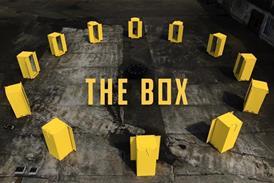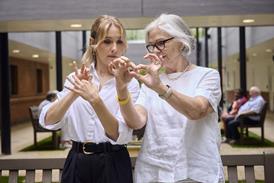The date is 6 May 1937. The giant German airship Hindenburg is nearing the end of its transatlantic voyage just outside New York when disaster strikes and the pride of the German air industry explodes spectacularly into flames.
Take an event as significant as the sinking of the Titanic, filmed by several news crews, whose passengers could have been characters in an Agatha Christie novel. Combine this with a twisting Poirot-style plot and you have the perfect ingredients for a drama-doc.
Hindenburg started with an internet search for material that would make a good documentary. I came across FBI documents relating to the disaster and decided to use the feds' investigation as a catalyst to explore the events leading up to it.
From the outset we wanted the drama to be set in 1937, while trying to establish what caused the catastrophe. In addition to the FBI documents we turned to original testimonies from the inquiry into the disaster, housed at the National Archives in Washington, DC. Writer Tony Mulholland had the arduous job of cherry picking from 48 testimonies. This information would form the basis of a whodunnit- style script, which was our brief from Channel 4 commissioning editor David Glover.
When it came to hiring a director we needed someone experienced in high-end drama, who also understood the principles of documentary. Our remit was to deliver a powerful factual drama, but it was essential that all the characters and events were real. We chose Sean Grundy as he would get the right performances out of the cast and cope with the limited budget and skin-tight shooting schedule.
To further complicate things, three different co-producers were involved. We needed to produce an 89-minute version with drama and archive only for ZDF, and two 100-minute versions for C4 and Smithsonian Networks. All three versions required a seamless blend of drama, archive and CGI.
The script demanded huge set builds, stunts and pyrotechnics. The obvious place to shoot was Poland, where we would get more bang for our zloty and find an experienced feature film crew.
We only had 14 days to shoot 60 minutes of drama and throughout the shoot we battled snow, force nine gales and temperatures of minus 10 degrees. Our Hindenburg wreckage set, made up of half a tonne of metal, almost blew away. I seem to remember that was the same day we temporarily lost the Portaloos in thick fog.
Then, after six consecutive shooting days, our precious rest day was nearly ruined by a stint in a police cell after we were accosted by a Polish policeman for jaywalking in the snow. Once he had taken our details we continued drinking more vodka at our favourite late night bar, Testosterone (I really know how to look after my team).
Following two exhausting weeks spent reconstructing the disaster at a disused airport 10 miles from Warsaw the hard slog was finally over. The remainder of the shoot took place inside a warm studio where Warsaw's finest construction team had been busily building the interior sets of the Hindenburg.
Our DoP, David Langan, was slightly alarmed by the sea of green covering our modestly sized studio, especially when a green shadow reflected onto the faces of our actors, making them look seasick. But it became a case of 'we'll deal with that in post'.
Back in the online, Steve Gilbert at Rainbow Post had something like 117 green-screen shots to composite. Fortunately he managed to alleviate the Incredible Hulk look as it would have been a stylistic compromise too far for our director.
Thankfully we survived the experience and came back with the ingredients for making a feature film. The Hindenburg disaster is an epic story and 70 years on we think we've made a film that does it justice.
Hindenburg is a Pioneer Productions programme for C4, ZDF and Smithsonian Networks. It airs on C4 on 17 September at7pm
Vicky Matthews: My tricks of the trade






























No comments yet